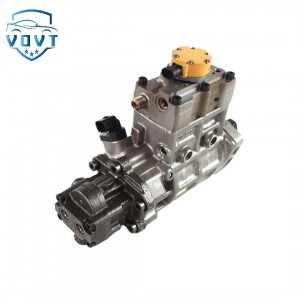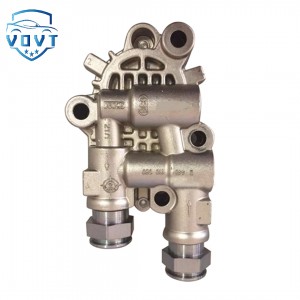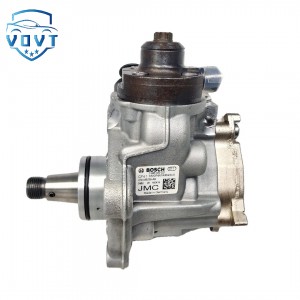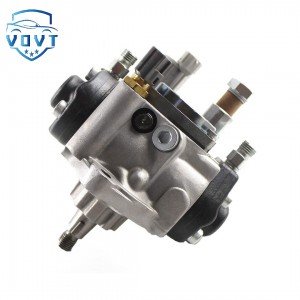Diesel Fuel Injection Pump 235-2026 10R-1001 201-4202 0R-2236 600-0624 30R-0083 For CAT 3412 Engine Auto Engine Part
products description
| Reference Code | 3412 |
| MOQ | 1 PCS |
| Certification | ISO9001 |
| Place of Origin | China |
| Packaging | Neutral packing |
| Quality Control | 100% tested before shipment |
| Lead time | 7~15 working days |
| Payment | T/T, Western Union, Money Gram, Paypal, Alipay, Wechat |
How to judge whether the oil pump needs to be replaced
Preliminary judgment based on the fault phenomenon
1. Difficulty in starting or failure to start
Difficulty in cold starting: internal leakage of the oil pump causes the oil pressure to drop rapidly after the engine is turned off, and the pressure needs to be re-established when starting again (manifested by turning the key several times before the car can start).
Difficulty in hot starting: after the oil pump motor overheats, the internal resistance increases, the speed drops, and the pressure is insufficient (commonly seen in aging of the electric fuel pump).
Complete failure to start: the oil pump motor burns out, the impeller is stuck, or the plunger pump drive shaft breaks, resulting in no fuel supply.
2. Abnormal flameout or power interruption during driving
Occasional setbacks/flameout: The oil pump intermittently supplies insufficient fuel (such as wear of the motor carbon brushes, poor line contact), especially when accelerating, climbing, or when the fuel tank is low on fuel.
Fuel pump flameout after abnormal noise: wear of internal parts (such as gear pump gears hitting, wear of plunger pump plungers) produces abnormal noise, followed by complete failure and fuel outage.
3. Power performance declines
Acceleration is weak and speed is limited: Insufficient oil pump pressure (such as common rail pump pressure relief) leads to insufficient fuel injection from the injector, and the engine torque output is limited by the ECU (the fault light may light up and report the "inadequate fuel pressure" code).
The maximum vehicle speed is reduced: The oil pump flow is insufficient at high speed and cannot meet the high load requirements of the engine (commonly seen in oil pump impeller wear and pump body wear leading to increased internal leakage).
4. Abnormal noise
Continuous abnormal noise from the oil pump: The electric fuel pump bearing is worn, the impeller scrapes the pump body, or the mechanical oil pump (such as the diesel engine camshaft drive pump) has a loose transmission mechanism, making "buzzing" and "clicking" sounds.
The abnormal noise changes with the speed: The abnormal noise of the mechanical oil pump is synchronized with the engine speed (such as the camshaft speed), and the abnormal noise of the electric oil pump becomes obvious as the motor load increases (such as during acceleration).
Accurately judge through professional testing
1. Fuel pressure test (key indicator)
Tools: Fuel pressure gauge (need to match the vehicle fuel system pressure range, such as 0.3-0.6MPa for gasoline engine low-pressure system and 100MPa or more for diesel engine common rail system).
Testing steps:
Connect the pressure gauge to the fuel line (usually near the injection rail or fuel filter);
Start the engine and observe the pressure value under idling, acceleration and constant speed conditions:
Static pressure (5 minutes after shutdown): Normally it should be maintained at more than 80% of the standard value. If it drops rapidly, it means that the oil pump check valve is leaking or the injector is dripping (further investigation is required);
Dynamic pressure: When the pressure is lower than the lower limit of the standard value at idle speed (such as gasoline engine lower than 0.25MPa), or the pressure fluctuation is greater than 10% during acceleration, it indicates that the oil pump has insufficient oil pumping capacity.
2. Data flow analysis (for EFI models)
Use the diagnostic instrument to read the actual value of fuel pressure recorded by the ECU vs the target value:
If the difference is greater than 15% and persists, it may be due to insufficient fuel pump pressure or a pressure regulator failure;
If the pressure fluctuation is greater than 20% (such as the common rail system pressure fluctuates), it may be due to wear of the fuel pump plunger, blockage of the fuel filter, or air inflow in the fuel line.
3. Fuel pump power supply and grounding detection
Electric fuel pump:
When the engine is turned off, short-circuit the fuel pump relay (or activate the fuel pump with a diagnostic instrument) and measure whether the fuel pump plug voltage is the battery voltage (about 12V);
If the voltage is normal but the fuel pump does not work, it may be due to motor burnout, carbon brush wear, or impeller jam; if the voltage is abnormal, it is necessary to check the circuit, relay, or ECU control signal.
Mechanical fuel pump: Check whether the drive mechanism (such as the camshaft eccentric wheel and transmission gear) is worn or loose, causing the fuel pump to fail to operate.
4. Fuel flow test
Disconnect the fuel return pipe and use a container to collect the amount of oil pumped per unit time (refer to the vehicle manual standard, such as the flow rate of the gasoline engine electric pump at idle speed should be >500mL/min):
If the flow rate is more than 50% lower than the standard value, it means that the oil pump is seriously worn (such as the impeller clearance is too large, the plunger stroke is insufficient).
Combined with service life and maintenance records
1. Fuel pump type and replacement cycle
Electric fuel pump (built-in):
The design life of most models is about 80,000-120,000 kilometers, but it is greatly affected by the quality of fuel (poor quality fuel contains impurities and moisture, which accelerates the wear of motor bearings and impellers). If the vehicle uses low-grade fuel for a long time or fails to replace the fuel filter on time, it may fail as early as 50,000-80,000 kilometers.
Mechanical oil pump (diesel engine):
Depending on the engine lubrication system, if the oil cleanliness is poor or the lubrication is poor, the plunger pair, gears and other precision parts may wear after 100,000-150,000 kilometers, resulting in insufficient pressure.
2. Maintenance history reference
If the vehicle has ever had excessive fuel pump load due to fuel filter clogging (e.g., the filter element has not been replaced for more than 20,000 kilometers), the fuel pump may wear out faster;
Frequent refueling after the fuel warning light comes on may cause premature aging of the motor due to poor heat dissipation of the fuel pump (relying on fuel immersion cooling).
Decision-making recommendations for fuel pump replacement
1. Situations where immediate replacement is required
The fuel pump does not work at all (e.g., no pre-fueling sound from the fuel pump can be heard when starting);
The fuel pressure is continuously lower than the standard value by more than 50%, and external factors such as filter clogging and pipeline leakage are excluded;
The fuel pump has obvious abnormal noise inside (e.g., metal impact sound), accompanied by a sudden drop in power.
2. Situations that can be postponed but need to be closely monitored
Occasional starting difficulties or low-speed setbacks, pressure detection is slightly lower than the standard value (such as gasoline engine pressure 0.28MPa, standard 0.3MPa), and the vehicle is close to the design life of the oil pump;
The oil pump has a slight abnormal noise (such as a slight "buzzing" sound at idle), but the data flow and pressure detection are normal, and it can be used for a short period of time and reviewed regularly.
3. Preventive replacement scenarios
If the vehicle has traveled more than 100,000 kilometers and has never replaced the oil pump, it is recommended to check the oil pump performance in conjunction with major maintenance;
For vehicles in areas with poor fuel quality (such as remote gas stations), even if there is no fault, the oil pump can be preventively replaced at around 80,000 kilometers (to avoid sudden failure after internal wear caused by impurities).
Precautions: Avoid misjudgment and safety risks
Distinguish oil pump failure from other system problems:
Starting difficulties may be caused by ignition system (spark plug, ignition coil) or sensor (crankshaft position sensor) failure;
Lack of power may be caused by turbocharging system, intake manifold leakage or injector blockage, which need to be checked one by one.
Safe operation of high-pressure system:
The pressure of diesel engine common rail system exceeds 100MPa. Before disassembling the oil pump or pipeline, it is necessary to release the pressure (disconnect the negative pole of the battery and wait for more than 5 minutes) to avoid personal injury caused by high-pressure fuel injection.
Choose original or high-quality accessories:
After-sales oil pumps may have problems such as unstable pressure and short life (especially high-pressure common rail pumps). It is recommended to give priority to original parts or well-known brand products (such as Bosch and Denso).























